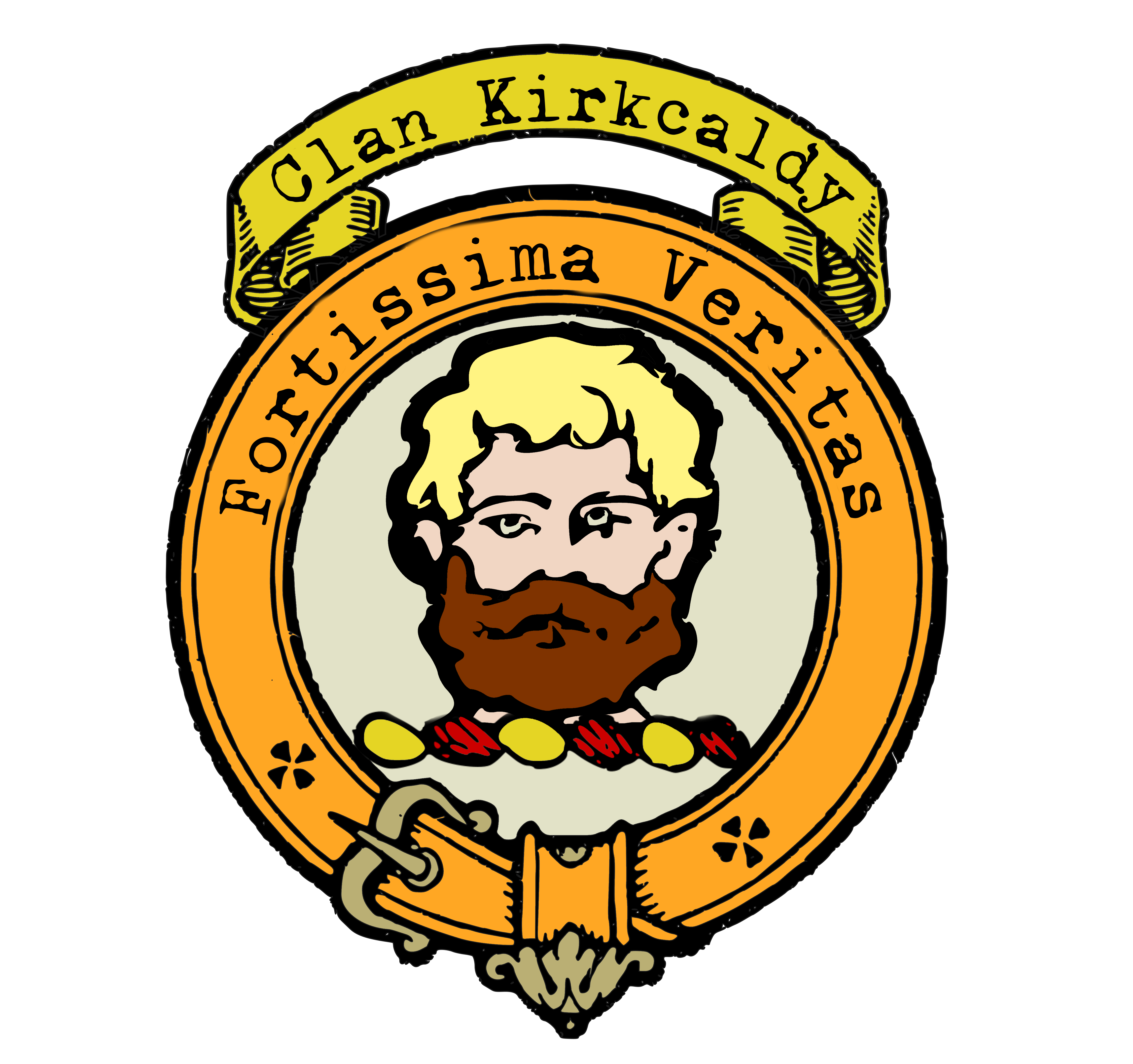Kirkcaldy Clan
|
|
CREST: A man’s head with the face looking upwards Proper MOTTO: Fortissima veritas TRANSLATION: Truth is the strongest VARIATIONS: N/A |
| Scottish clans have long been woven into the fabric of the country’s history and culture. One such clan, the Kirkcaldy clan, holds a significant place in the annals of Scotland’s past. From its origins in the ancient lands of Fife to its prominent members and dramatic events, the history of Clan Kirkcaldy is a captivating tale of power, loyalty, and tragedy.
The Kirkcaldy clan traces its roots to the lands in Fife, Scotland, where the town of Kirkcaldy would later emerge. The name itself is believed to have evolved from the ancient Celtic church known as the Culdees, with “KilCuldee” transforming into the familiar name “Kirkcaldy.” The area was reputed to be a site of worship for the Culdees, adding a touch of mysticism to the clan’s heritage. One of the earliest recorded members of the Kirkcaldy clan was Willilmus de Kyrcaudi, who served in holy orders in Stirling in 1299. The clan’s prominence grew with figures like Amdreas de Kirkaldy, who received a pension from King David II in 1363. The principal families of Kirkcaldy acquired lands in Inchture, Perth, and Grange, Fife. While the house of Inchture ended prematurely through marriage, leading to the adoption of the name “of Inchture,” the Kirkcaldy family of Grange flourished. Sir James Kirkcaldy of Grange, serving as treasurer to James V, marked the family’s ascent to power. However, it was his son, William Kirkcaldy of Grange, who would leave an indelible mark on Scottish history. William Kirkcaldy of Grange emerged as one of the most accomplished soldiers of his time. Following the disastrous Battle of Solway Moss in 1542, King James V sought refuge at the house of Kirkcaldy of Grange, predicting his own demise within fifteen days. This prediction proved accurate when the king died at Falkland Palace, supposedly uttering the prophetic words, “it cam wi’ a lass and it will gae wi’ a lass,” referring to the birth of his daughter, Mary, Queen of Scots. William Kirkcaldy remained a staunch defender of Queen Mary. He held Edinburgh Castle against the forces of her enemies, led by the Regent Morton. The siege lasted until May 29, 1573, when Kirkcaldy was forced to surrender. Despite being promised fair treatment, he and his brother were executed at the Market Cross in Edinburgh, marking a tragic end to their unwavering loyalty. While the Kirkcaldy clan endured several adversities, their resilience was evident in their ability to rebound. The lands were eventually restored to a nephew, and in 1664, the family received a baronetcy. However, the title would eventually become extinct in 1739, marking the end of an era for the Kirkcaldy clan. |
|
Citations:
|
|

Purchase @ Redbubble
Purchase @ Amazon.com
Purchase @ Amazon.co.uk

